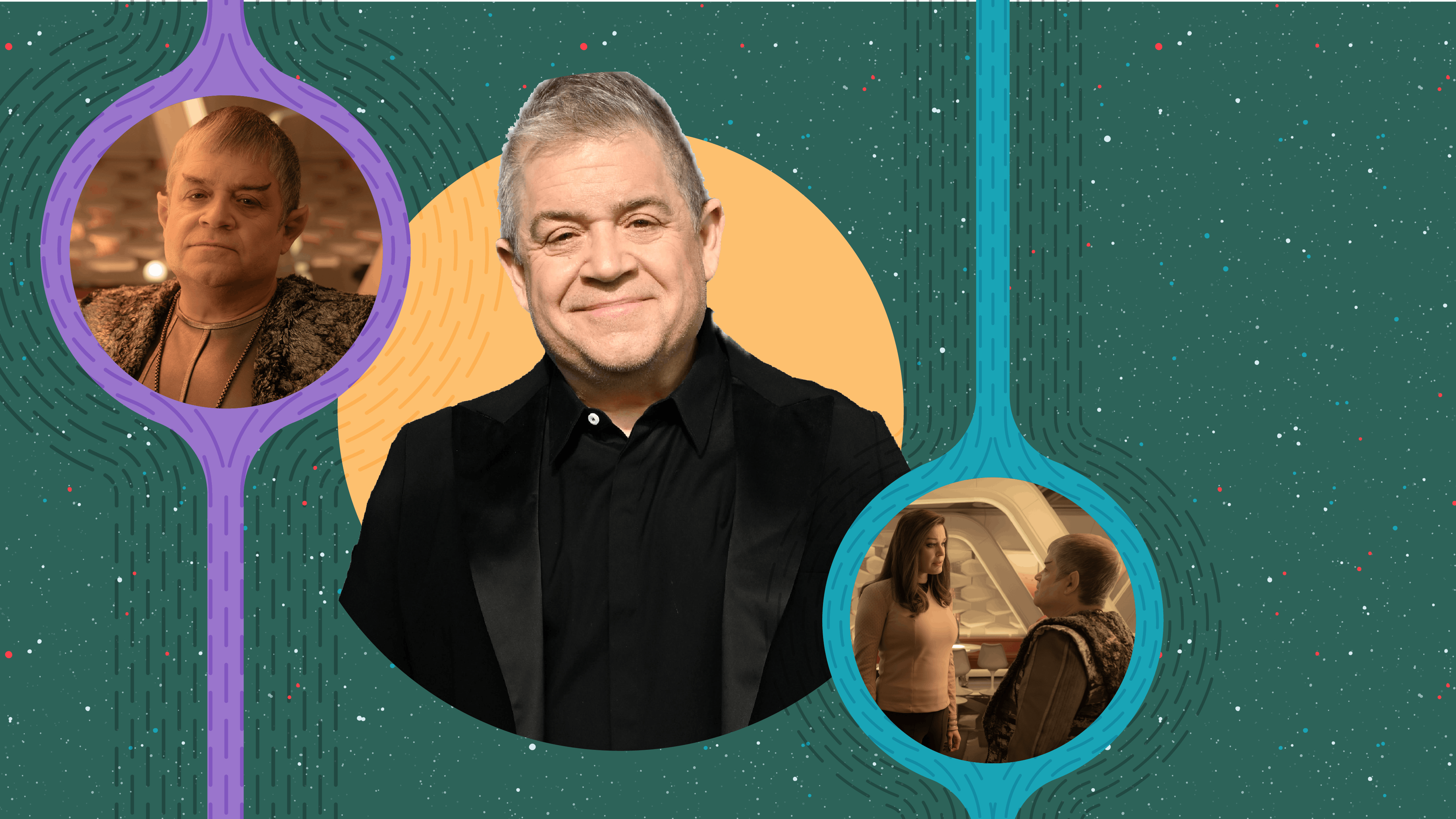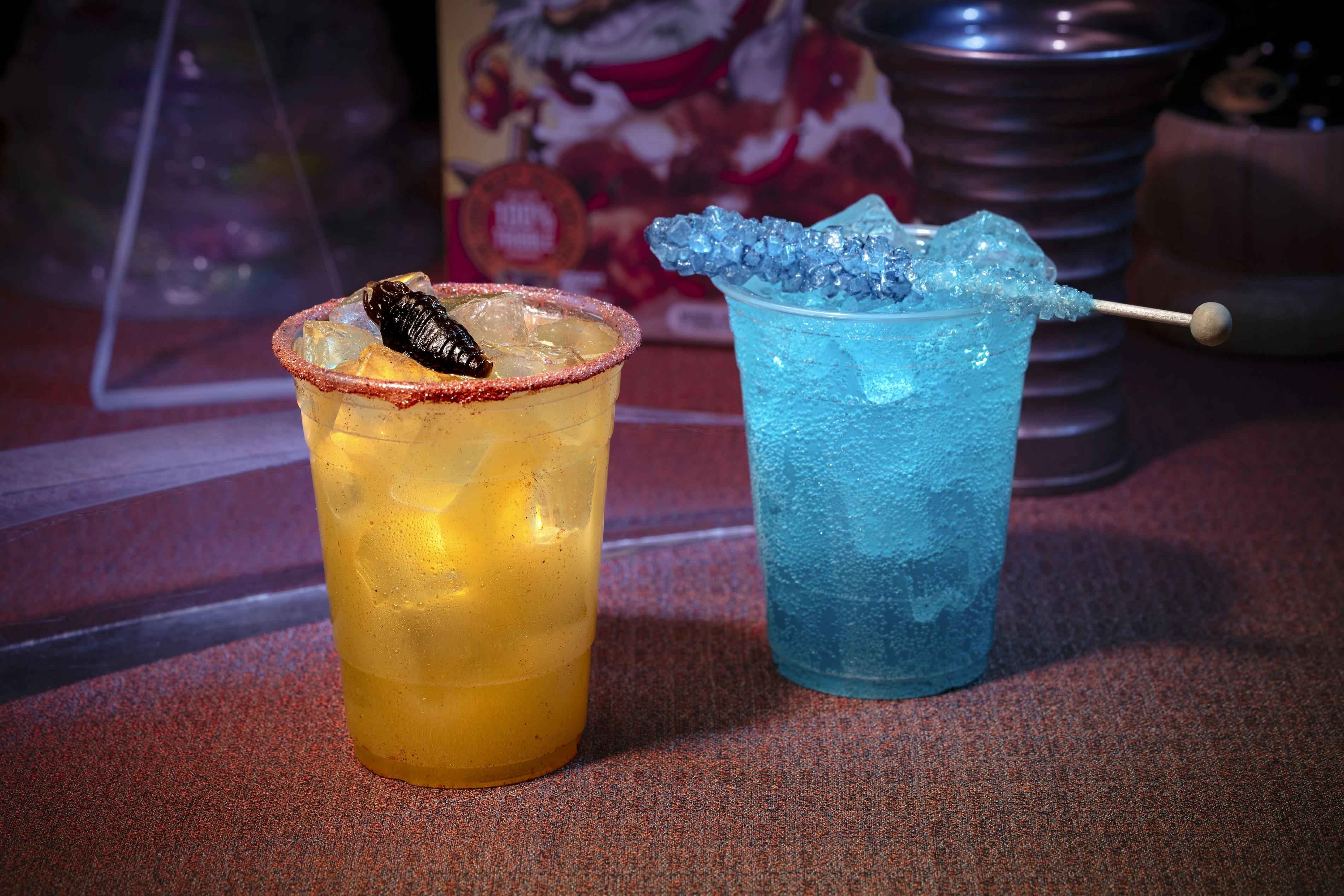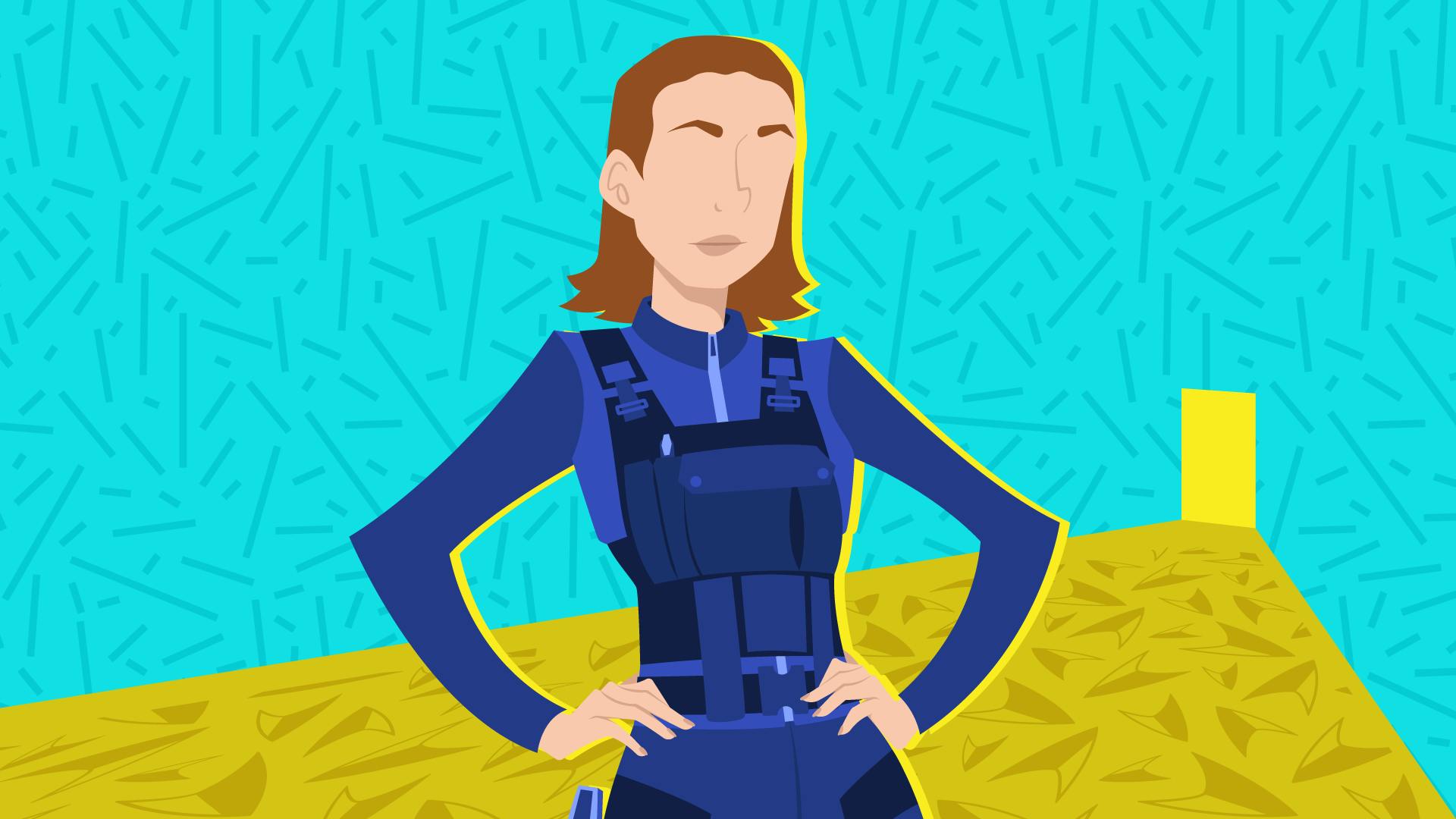Published Jun 4, 2024
WARP FIVE: Costume Designer Anthony Tran Weaves Real Life and Past Influences into Discovery's Tapestry
The Star Trek: Discovery costumer details Vulcan wedding gowns, Breen uniforms, and more!
SPOILER WARNING: This article contains story details and plot points for the fifth season of Star Trek: Discovery.
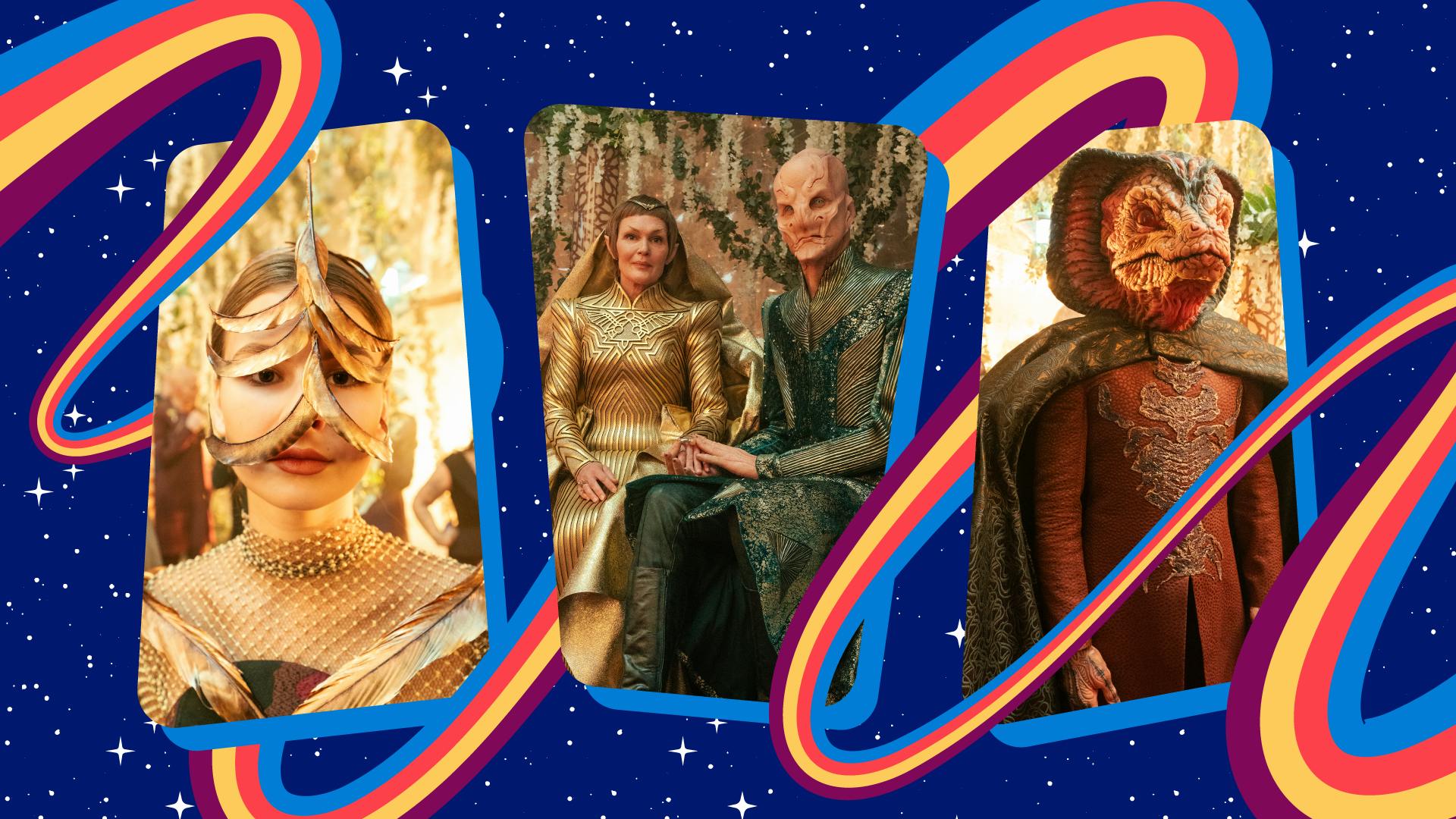
StarTrek.com
Welcome to Warp Five, StarTrek.com's five question post-mortem with your favorite featured talent from the latest Star Trek episodes.
's fifth and final season has taken the crew of the U.S.S. Discovery, and viewers, across the galaxy on an epic chase that has led us to places such as Q'Mau, the caves of Mak'ala, Halem'no, the Eternal Gallery and Archive, the Infinity Tunnel, Sanctuary Four, and more.
With each new destination, we've discovered new cultures and new environments. The ambitious fifth season's look and feel was brought to life not just by the talents on-screen, writers, and creatives, but the countless teams behind-the-scenes including props, sets, and costume designers.
StarTrek.com had the opportunity to talk to the costume designer Anthony Tran about incorporating real life cultural influences and Star Trek's past into the designs of the 32nd Century, designing T'Rina and Saru's finale wedding looks, and more!
Making First Contact
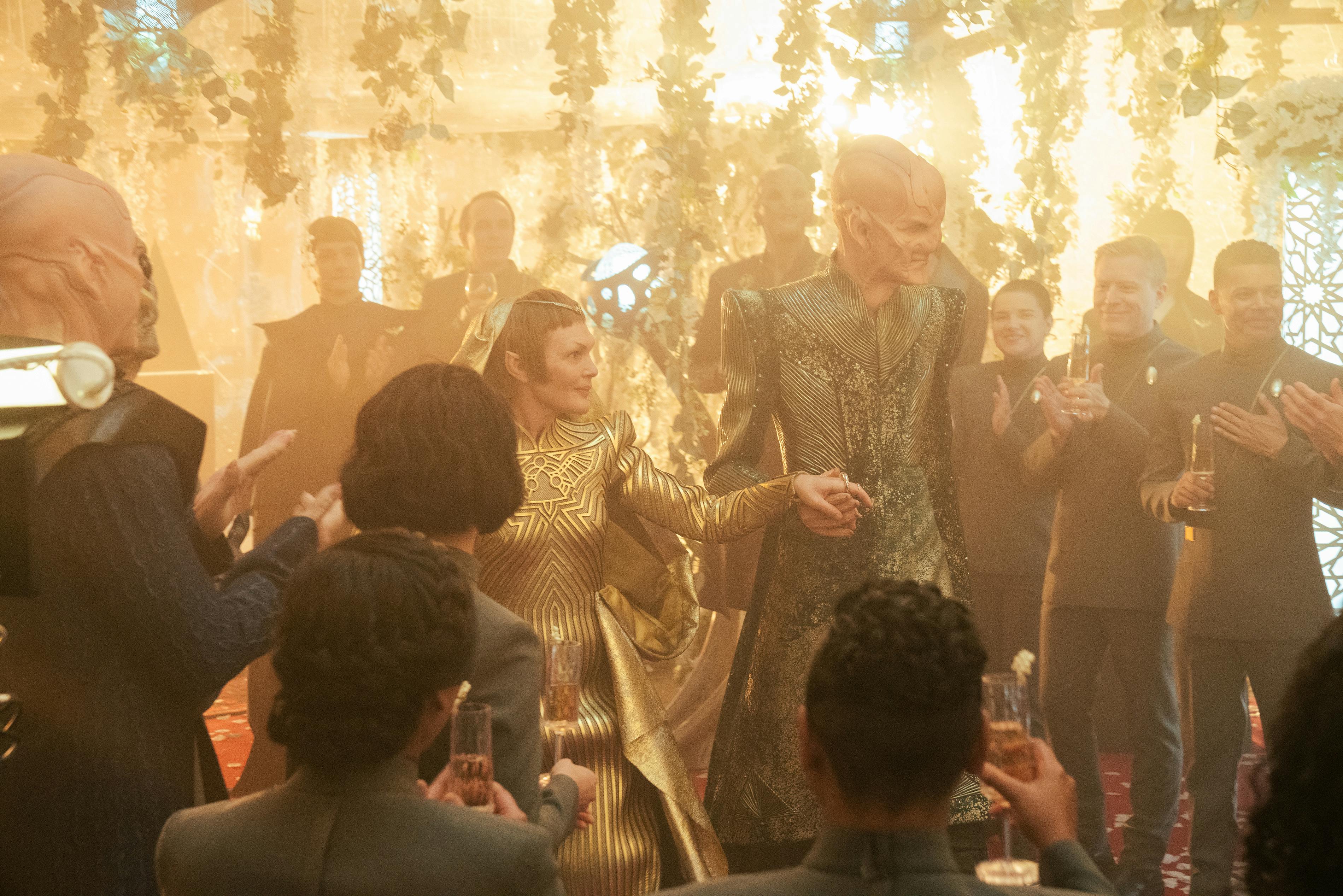
Behind-the-Scenes of "Life, Itself"
StarTrek.com
For Anthony Tran, Star Trek was presence that came in and out of his life since his youth. He recalls his first contact when he was a young child.
"My parents were fans of ," states Tran. "I remember at one point we were in LA randomly, I grew up in Southern California, and we met George Takei. My parents are immigrants from Vietnam, and they were so stoked about it. I had seen bits of it, but I wasn't immersed in the world. I was later reintroduced again with ."
Approach to Season 5's Designs
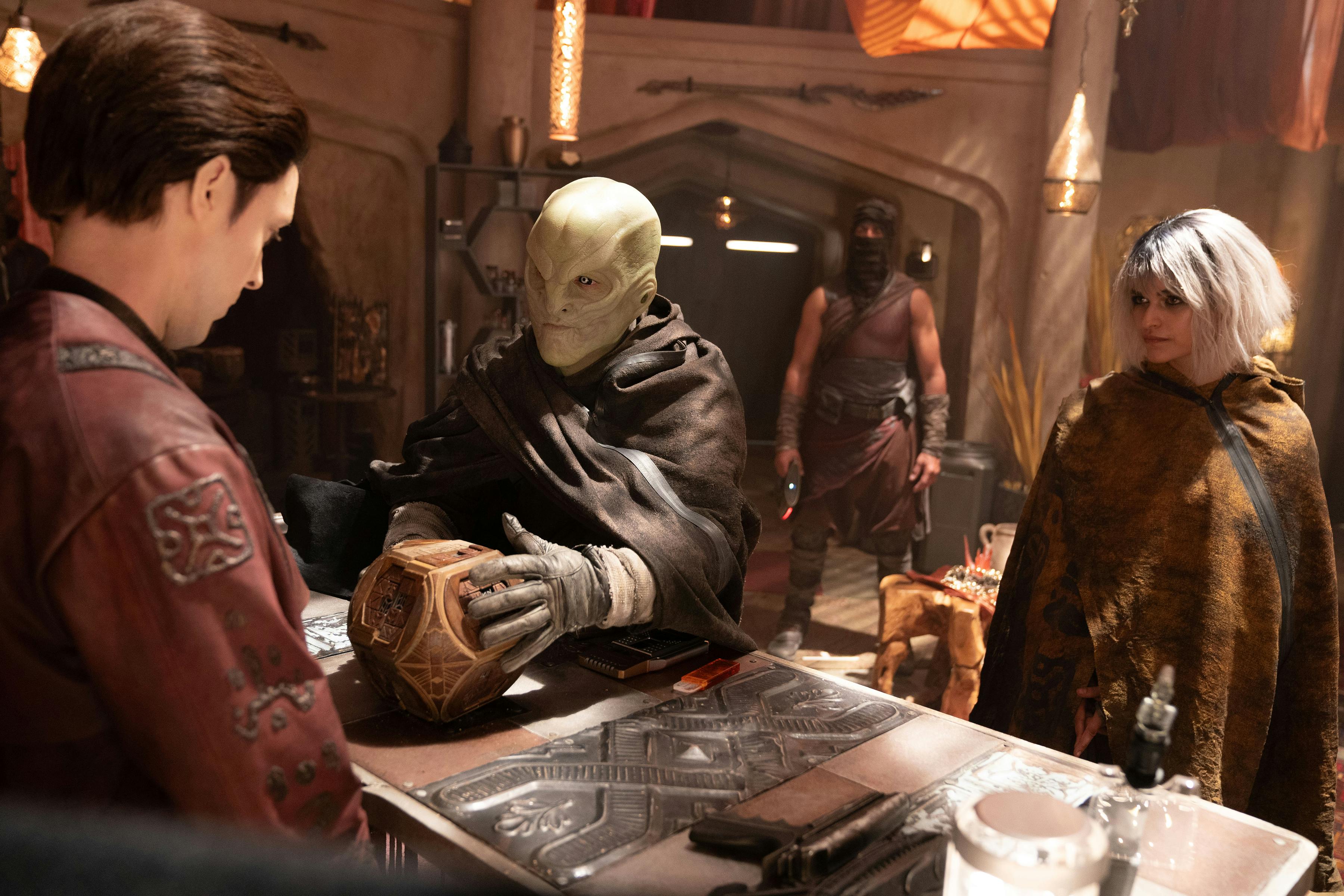
"Red Directive"
StarTrek.com
Tran drew from various aspects of his culture, studies, and background for all of this season's looks, which he took time to walk through with StarTrek.com.
"Our first episode, we went to a planet called Q'Mau," details Tran. "The references are pretty clear that it's Bedouin, Tuareg, traditional nomadic tribes. But I also looked at Miao and Hill tribes, and Vietnam and Thailand, just purely from a textile perspective. The work they do is really interesting; the stuff they do with headdresses and all that we later played with a bit when we went to Halem'no [in 'Whistlespeak'], looking at things that were not purely traditional influences that people look at."
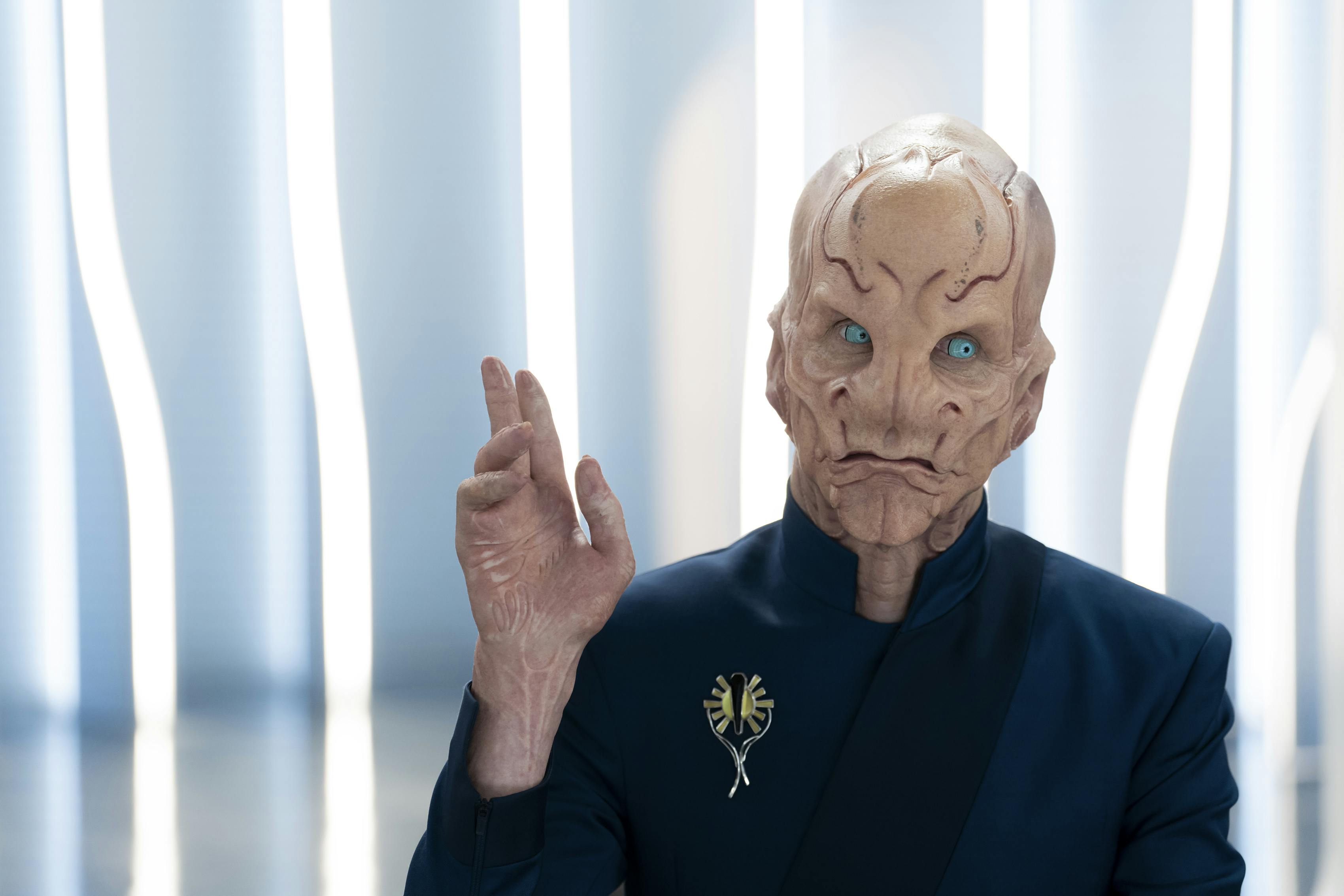
"Jinaal"
StarTrek.com
"Growing up and even looking at the Vietnamese ao dai, the way that's cut and its linear-ness, that influenced what we did with Saru when he became an ambassador, with how we played with lines and the collars," reveals Tran. "All the geometry of that, the layering of the skirt and the pant, that feels very near Eastern Asian."
"I'm such a costume history buff," Tran shares. "That was my way into becoming a costume designer, looking at our history, and being a huge fan of John Singer Sargent and all these people that would paint great costume portraits. When I worked a bit in museums, I had a hands-on approach to textiles. That's why I always feel like costume design, even though we're in the 32nd Century with Star Trek, it still feels grounded and lived in. We had an amazing textile artisan breakdown team in Toronto, and the way we would take things that were new and just made them look older, so you could feel there was history in them."
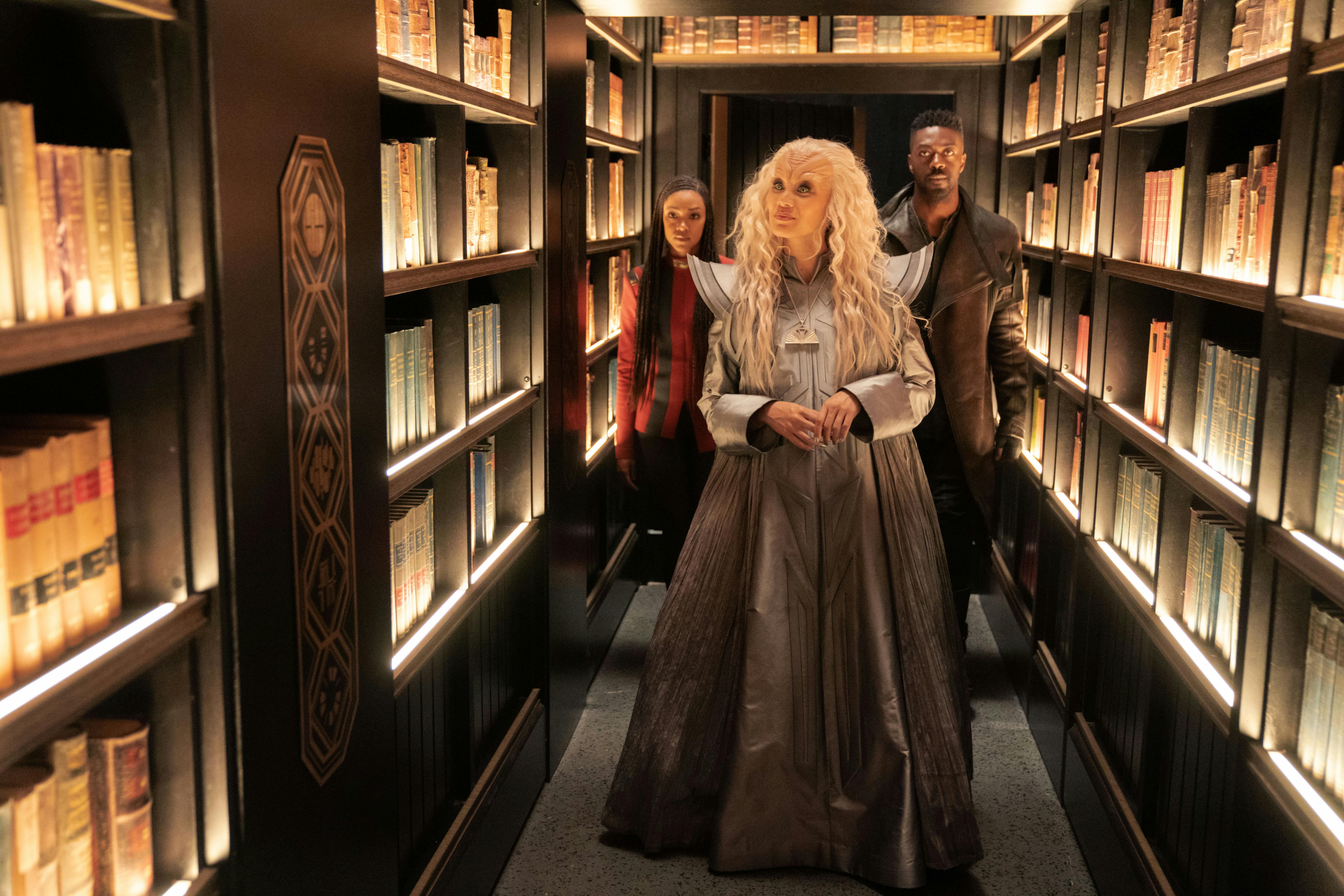
"Labyrinths"
StarTrek.com
"In terms of the stuff for the [Eternal Gallery and Archive in 'Labyrinths'], we had the character Hy'Rell who was an Efrosian," says Tran. "That was actually inspired by a president in another series; the way they cut his costume, and there was this very specific quilting they did on that. I used that as a springboard for what we did. We just did it in a different way with glue versus sewing, updating some techniques."
Tran gives credit not only to his 65-people strong costume department, but the entire art department led by Doug McCullogh, Olatunde Osunsanmi, Michelle Paradise, Alex Kurtzman, stating, "There were just so many hands on deck, but everyone was so open to ideas."
Noting how science fiction shows in the last 10-15 years all "merged together a little bit in aesthetic," Tran found balance by incorporating his Asian background — "things that maybe people haven't looked at that exist" — and playing with all the beloved touchstones from previous Star Trek series that the numerous genuine Star Trek fans in his department enjoy. "There's a lot of collaboration," notes Tran. "In terms of creating new worlds, it's starts with the scripts and the various worlds, which were so vividly imagined. Then Doug [McCullogh] and I were designing in tandem. He started a little bit earlier than I did. When I looked at the sets, I was like 'Okay, cool. Knowing that’s what you're doing, we'll play off the colors.' He was going these rune designs in the first episode with Q'Mau, so I incorporated those into the costume. There was a kind of reciprocal back and forth between us."
A Wedding to Remember
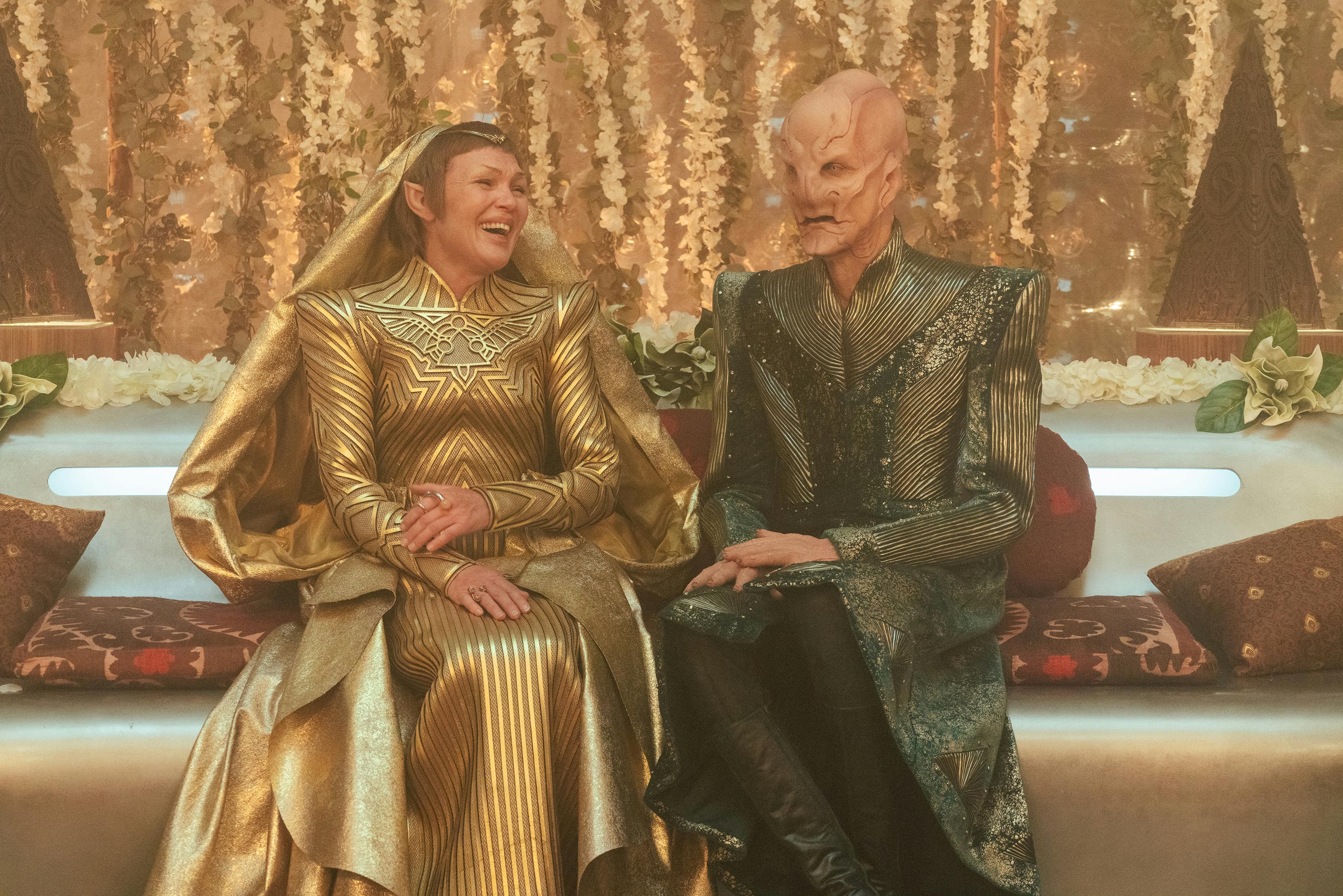
"Life, Itself"
StarTrek.com
The costumes Tran delighted in designing the most this season were all the looks for Saru and T'Rina's wedding in "Life, Itself." Specifically, T'Rina's Vulcan wedding dress.
Tran shares, "T'Rina's wedding dress was my way in. I remember when I met with the team early on about doing the show, they told me there was a wedding at the end," which resulted in him germinating on all his ideas throughout the course of a year.
Influences for T'Rina's wedding dress came from previous Vulcan wedding looks from T'Pring in both The Original Series and , and T'Pol in . Focusing on the nuances in Vulcan culture, Tran explains, "Coming from a Vietnamese background, I know what Vietnamese clothes look like versus Cambodian clothes versus clothing from Thailand." Trying to keep distinct cultural identities, it was important for Tran to factor in T'Rina's Ni'Var background in the 32nd Century, but also all the various iterations of Vulcan designs."
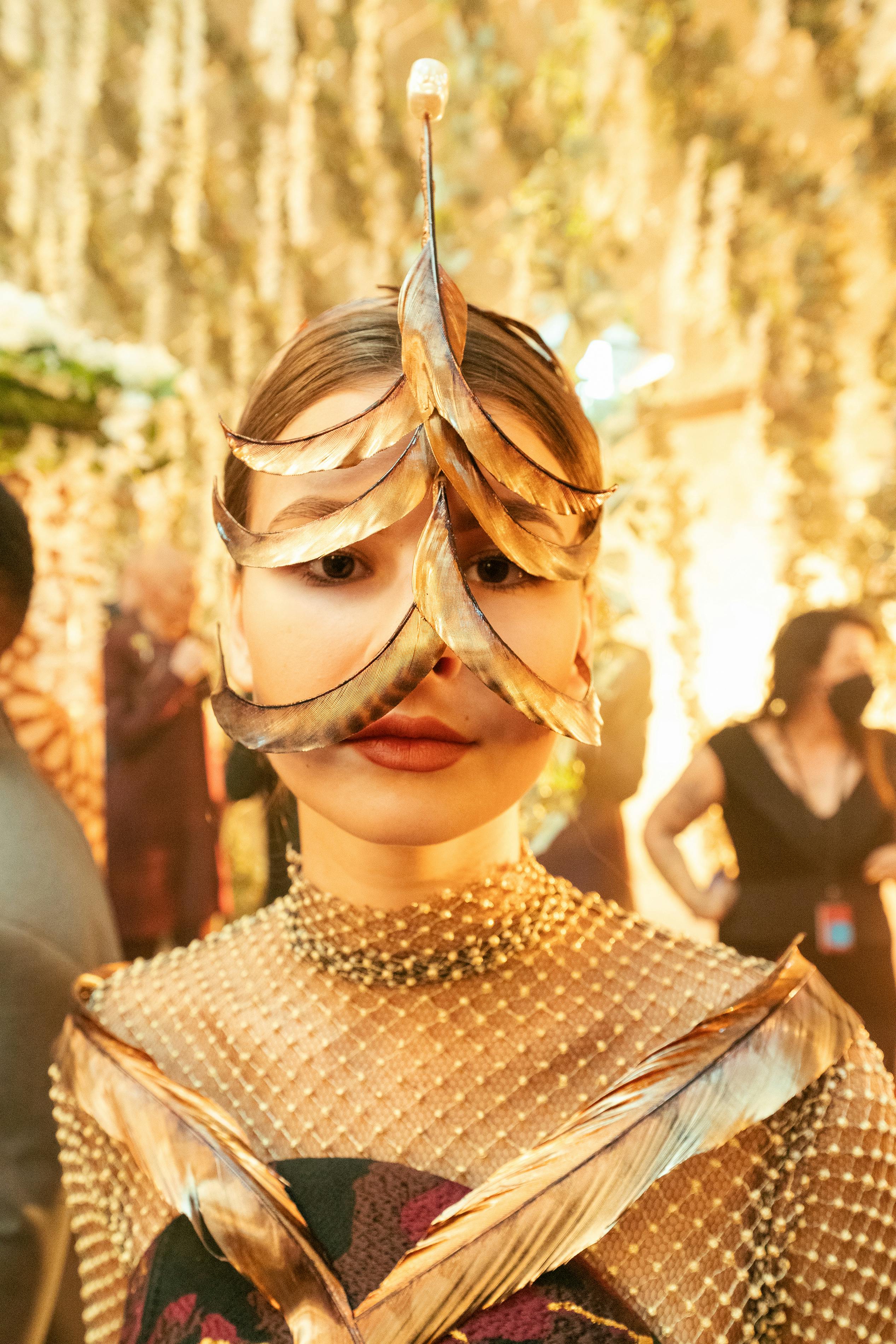
Behind-the-scenes of "Life, Itself"
StarTrek.com
"We [emphasized] the strong shoulder T'Rina had, and played with both of T'Pring's iterations, which had linear-raised designs," Tran details. "The idea for me became how do we create our own 32nd Century version of lace? Lace is such a great overly used textile in wedding costumes. That symbol that's on her chest is a symbol of Ni'Var. We had a great tailor, Ritta [Koleva], who patterned out her costume, and then our build team, led by James Bolton, basically took a 3D print of her body, and then we carved out all of those lines on her body. It was actually gold leather that we then re-applied up to the top of the texture and raised it so it feels very dimensional and super modern."
"Then the veil was inspired by T'Pol, who in Enterprise, had this veil that was sitting on the back of her head," adds Tran. "Trying to create some more structure with that and make something that was dramatic. It was a little bit inspired Princess Grace's wedding dress from the '50s that I saw at a museum. If you look, there's a very distinct lace, and an over-skirt element to it. That was another reference for T'Rina there."
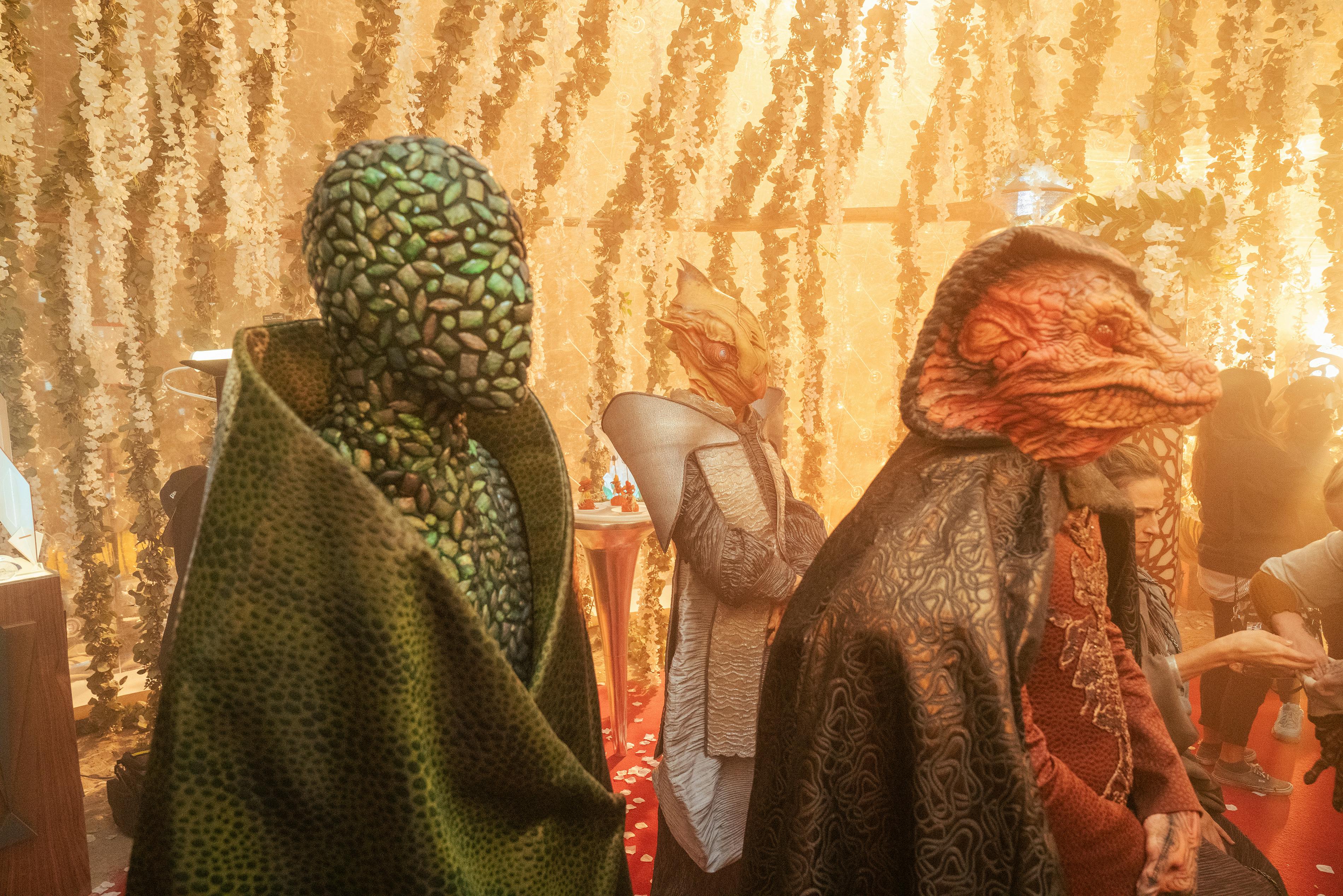
Behind-the-scenes of "Life, Itself"
StarTrek.com
Not only that, Tran calls all the wedding guests' looks the "greatest hits of Discovery," that captured a Royal Wedding feel with 30 additional looks, as well as Starfleet's formal wear. "It was a big operation," Tran comments. "It was really fun creating new ideas of people and new ideas of cultures. It was a 65-person costume department, and by the end of working together for the better part of a year, you really get to know people's strengths and the things they enjoy doing. We also had a great milliner and designed this really crazy hat that she had a great time building. Someone who really loved to sculpt created new laces and sculpts. It was just an idea of celebrating the work we'd done together in this big culmination, that also coincided with the finale."
Weaving Past Influences into the 32nd Century

"Erigah"
StarTrek.com
One of the essential designs under Tran's purview for this ambitious season was the monolithic , which took four months of prototyping alone. "One of the first things I met with Michelle Paradise and Olatunde [Osunsanmi] was Breen, Breen, Breen," Tran recalls. "It's the season of the Breen. I remember at first, I thought, 'Oh, we just need 10 [uniforms],' and by the end of it, we made 60 of them."
"There's a responsibility where obviously that costume is pretty iconic and specific," explains Tran. "The idea of trying to update that became a little bit tricky. There was this discussion of their refrigeration technology. I actually found a bunch of photos, I think from a Christie's auction, of the original costumes. I studied those religiously for a bit and was hand-drawing out ideas of just trying to slim it down a bit, making it feel a bit cleaner and sleeker, which was the aesthetic for Disco from the beginning."
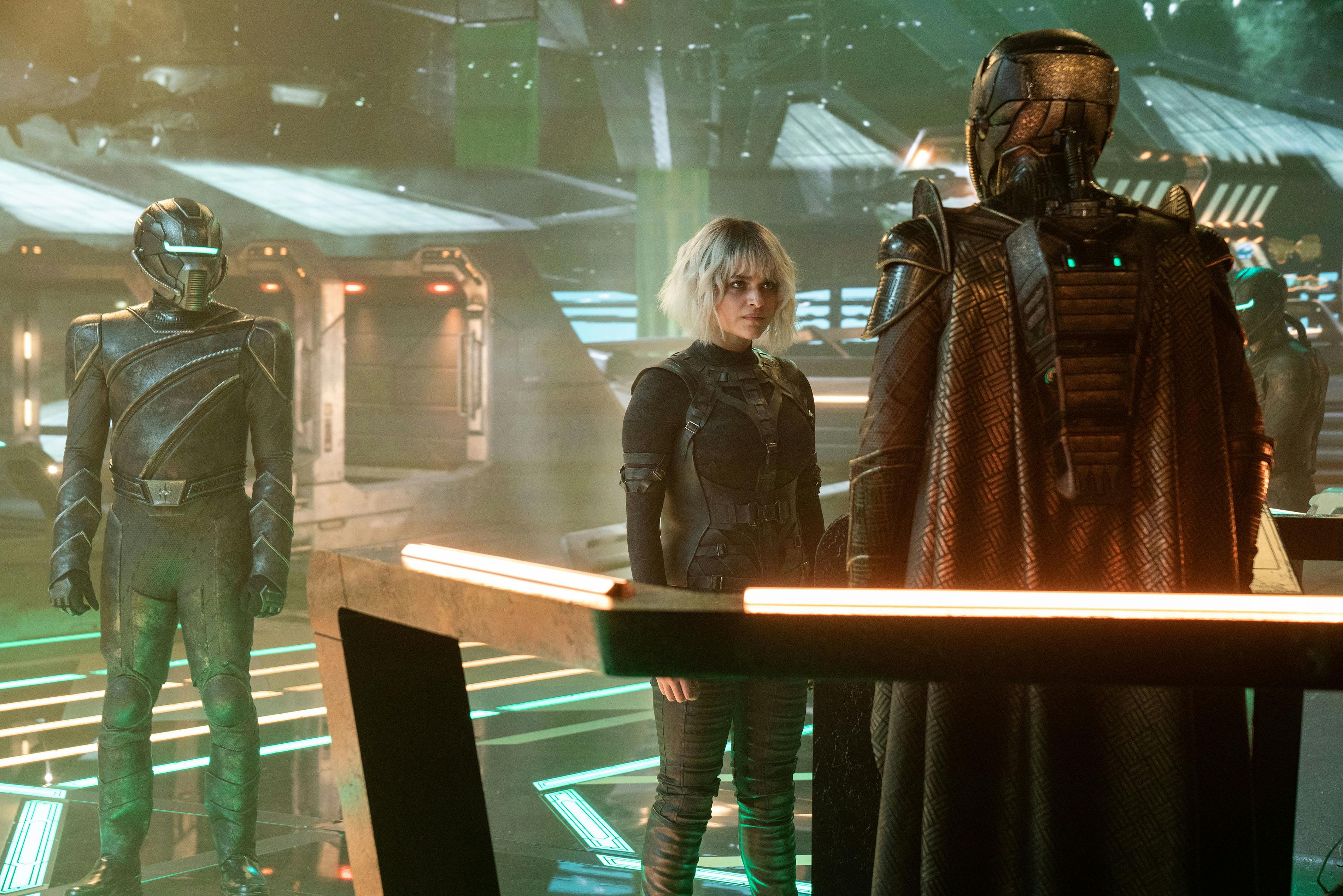
"Labyrinths"
StarTrek.com
"Taking that and the root inspirations, which were those diagonal plates and figuring out how to recut those," says Tran. "There was this whole refrigeration technology element, that the Breen were going to be gelatinous, but they had this suit that was keeping them together. The original costume had these backpacks on them. So, for me, the idea was this was the genesis for that technology, that was the cooling system; there might be tubes everywhere, inspired by NASA cooling suits. We started weaving tubes into things, playing with hoses and such. All those lines and things are from the original costumes. In terms of profile and all that, obviously with helmets, we slimmed all that down, keeping a little bit of a nod to that beak shape, making it feel a bit more modern since they're obviously a thousand years or so later."
Boldly Going Further into the Future
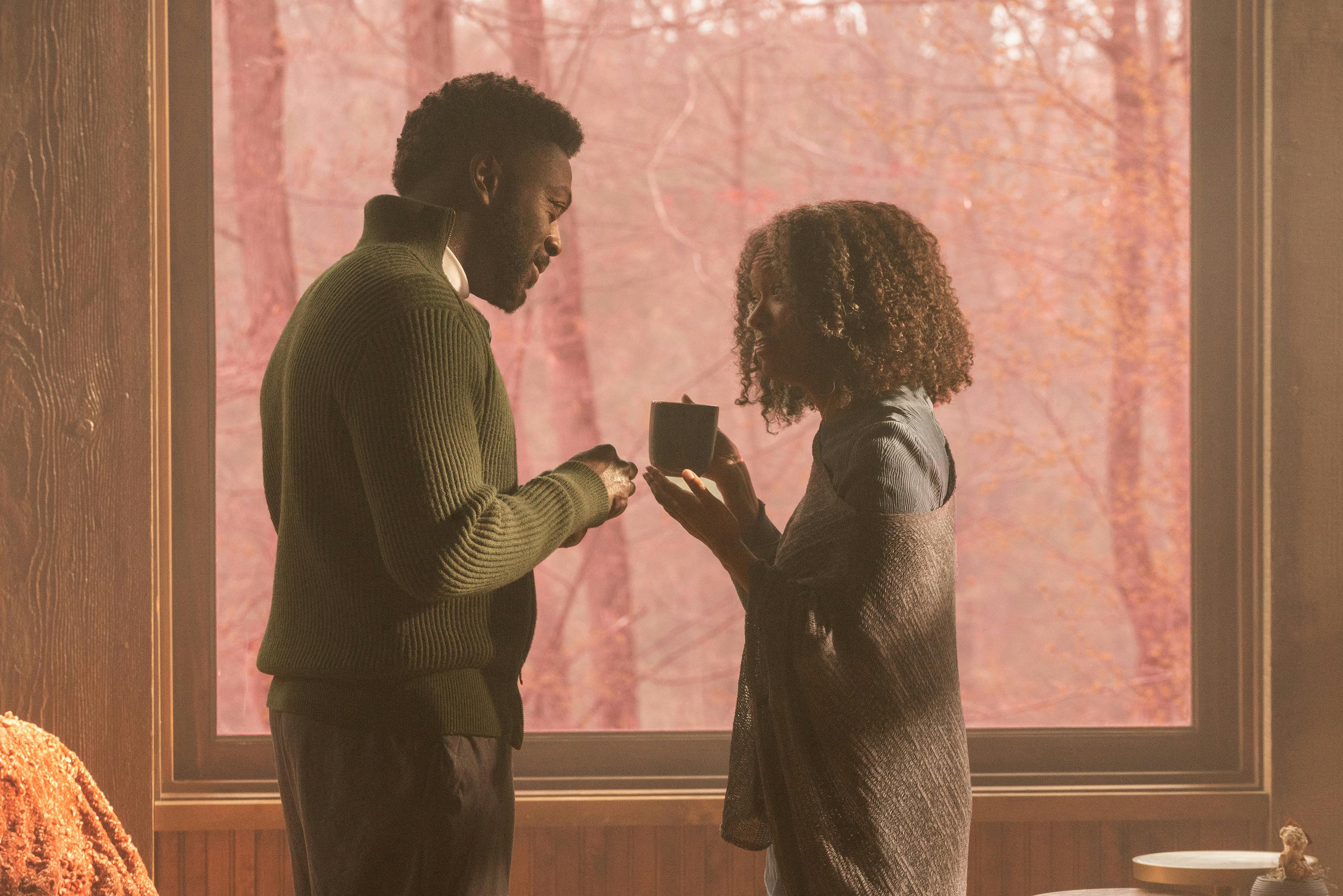
"Life, Itself"
StarTrek.com
At the end of "Life, Itself," we see the now Admiral Burnham and Cleveland Booker in their home on Sanctuary Four. Their son, Captain Leto, makes a surprise visit to accompany her to her former ship for its next Red Directive mission.
Tran concludes the conversation with StarTrek.com going through the various looks for the coda. "The [designs] were very script-driven," says Tran. "Book and Burnham were living this remote lifestyle. We were trying to ground the clothes and make them feel as real as possible. They feel very contemporary, but they're all askew. Book's sweater is asymmetrical. Burnham wears these weird textures with her pajamas, and then later has this work-wear outfit where the jacket has all this belting on it. It was about playing with things that were contemporary and making sure it felt really lived in and earth."
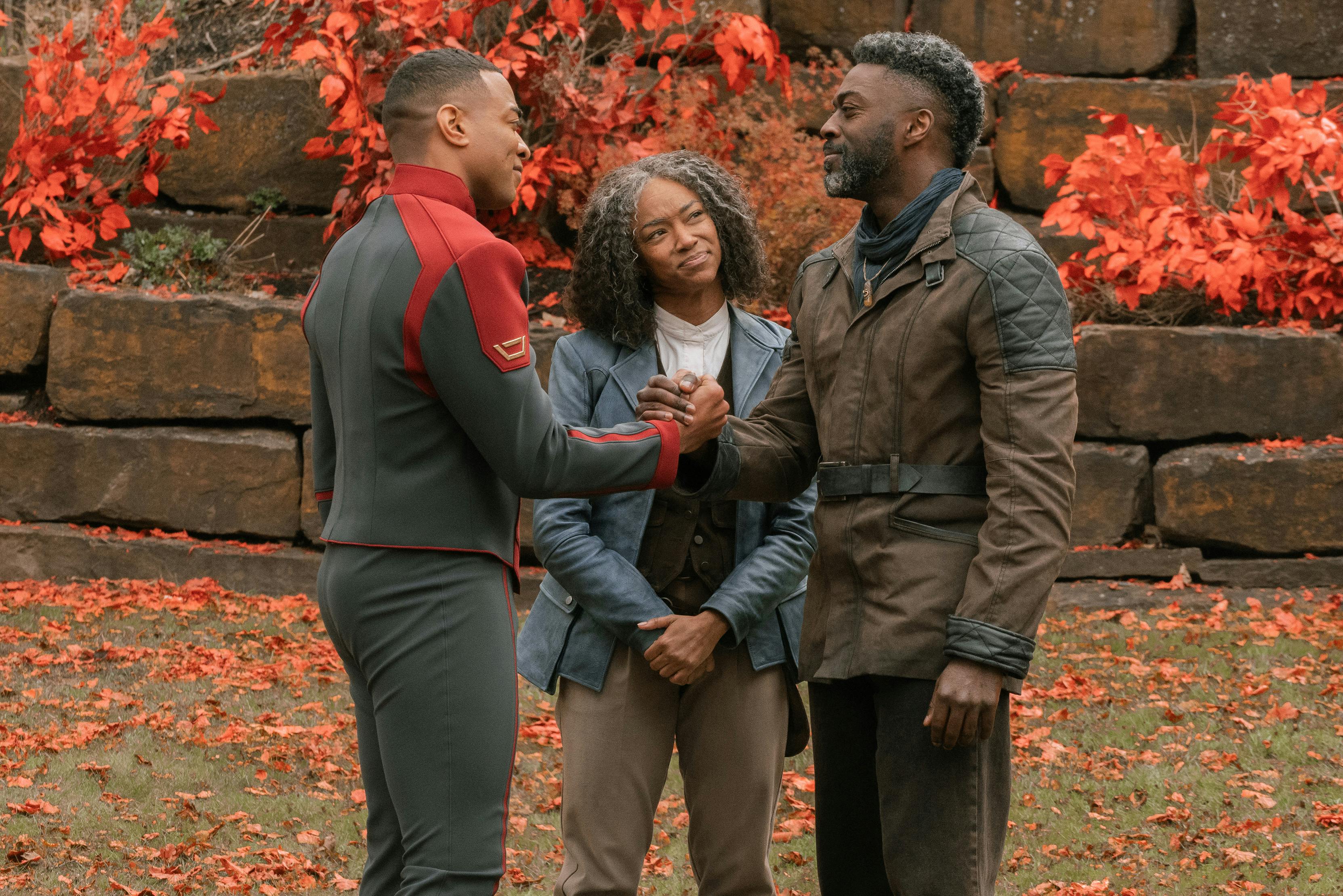
"Life, Itself"
StarTrek.com
"Then, one we got to the uniforms, I don't think we’ve ever sprung that far into the future before, so playing with those was a lot of fun," Tran continues. "I love the jumpsuits from TNG; that's my favorite Star Trek look. When it came to [Captain Leto] and what he would look like, that was my inspiration. But since we were jumping so far forward, the idea of layering came in. How we sewed and put it together felt very dimensional. Everything is sewn stacked on top of each other, but the reference is pretty TNG in terms of my own taste there."
"With Admiral Burnham's costume, we used that same idea, this stacking the way things were sewn and the way they were put together as from technology from the future," he adds. "Her costume is obviously inspired by those uniforms. Again, playing with that, it felt like a great celebration of Star Trek springing so far in the future, but referencing all the things that I think people really love about the [franchise]."

